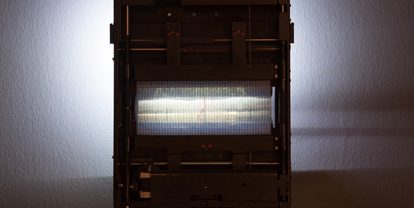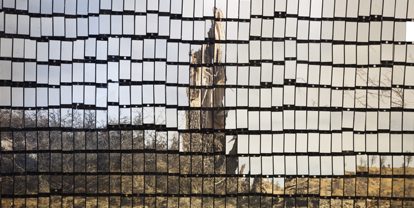corruption, retooling, connection
Arya Tabandehpoor
July 20 — August 08, 2018
Technology has cultural manifestations; it defines the way culture is understood and utilized. It has different implications in different cultures. Error and malfunction is an inseparable part of our perception of technology. The harmful and destructive aspect of technology is its being prone to failure and getting out of control. In art, however, that destructive aspect is not produced by limitations; it is, rather, the result of the delightfulness of the extraordinary. Tech-oriented art is the outcome of “processing” as well as “processing failure.” “Failure” means reevaluation, which will lead to further developments.
In his recent series, “Corruption, Retooling, Connection,” Arya Tanandehpoor brings the deep layers of an image and its uncontrollable aspect out on the playfield: the failed part (corruption), the invisible, discarded part (retooling), and the future of technology (connection). This is the “unknown” part. It is when technology is unable to read its components, and recognizes the error as “unknown”: an unknown error has occurred.
The concepts of decay, inability, weakness, and disability in Arya’s recent works are expressions of his personal approach to aesthetics. He is neither trying to create “something beautiful” nor is he trying to reject it: the decomposing bodies, the decaying nature, and the perversity of emotions. In his previous series, “Skin, Flesh, and Bone” and “Human, Animal, Tree,” the borders are crossed and relations are made in the closest possible sense: it goes through the skin, cuts through the flesh, and reaches the bone. In these series, humans and their surroundings are inextricably intertwined. Generally, humans play the most significant role: friend(s). In this series, however, “they” are omitted.
In “Corruption,” we see photographs that describe the results of a situation that has gone wrong. The word that describes this situation is “glitch”: the inability of the image to read itself. This series of images that are manipulated by the artist are a collection of digital artifacts that are simulated by the visual aspects of real glitch and placed in 365 kaleidoscopes. In “Corruption,” meaning is communicated in a dynamic way. Here, the image is already gone through a process.
“Retooling” is split into two parts: the visual and the mechanical. One is consisted of machines that used to be parts of bigger systems before they were discarded, and the other consists of photos in which the image codes have replaced the visual components of the image. Both parts reveal profound, invisible layers of some sort of connection. Here, too, meaning is communicated in a dynamic way. The images are already processed, but they are processed once again while they are being displayed.
In “Connection,” the procedure changes a little bit. The overall image is split to fit into tiny screens of cellphones, while retaining their characteristics. Every detail contains information from the whole, and the whole reflects information from each parts. This series is a depiction of details and the entirety of an image in the frames of smart phones that are not smart anymore. In “Connection,” meaning is communicated in a static way. Here, we see the end of the process; the end of the life of the machine; the end of nature.


